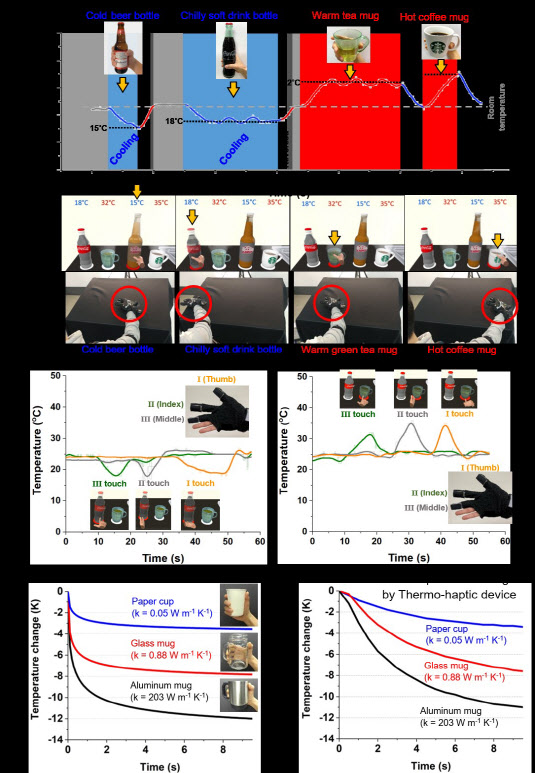Department News
[Edaily] Profs. Seung Hwan Ko and Dongjun Lee Develop Thermal Sensation Technology for VR
Temperature in VR Space … SNU Research Team Develops Thermal Sensation Technology
Joint Research between SNU Profs. Seung Hwan Ko and Dongjun Lee
‘Soft Wearable Thermo-Haptic Device’ Artificially Recreating Thermal Sensations in VR
[By Kwang-beom Han, Edaily] Seoul National University research team has developed a ‘soft wearable thermo-haptic device,’ which enables thermal sensations such as touching a cold Coke bottle or a hot coffee cup in virtual reality (VR).
On April 3, SNU College of Engineering announced that Professors Seung Hwan Ko and Dongjun Lee from the Dept. of Mechanical Engineering, of Applied Nano and Thermal Science Lab and Interactive & Networked Robotics Lab respectively, conducted a joint research on a wearable device that can enable the user to feel thermal sensations in virtual reality.
A recent MBC documentary depicts recreating and meeting a deceased daughter in VR; the technology has advanced dramatically. In the episode, the VR technology recreates subtle movements, gait, voice, and speech patterns of the daughter.

Members of Applied Nano and Thermal Science Lab at SNU Dept. of Mechanical Engineering
(From left to right) Prof. Seung Hwan Ko, PhD students Jinwoo Lee and Heayoun Sul (Photo=SNU)
“Adding a thermal sensation would have made the experience even more realistic,” said Prof. Ko. “We can visit places that are hard to access and even be reunited with people we can’t meet face to face.”
Commonly used VR devices today rely on sight and sound. Sensory information such as roughness, hardness, pressure, and temperature is oftentimes excluded.
Therefore, researchers around the world have worked on developing a wearable device that can recreate the sensations that would be felt by a hand, which is highly receptive to external stimuli.
The research team at SNU focused on temperature sensation. They developed a device that can artificially recreate the temperature the user feels upon contacting an object in VR space.
The device is made to be stretchable and fit closely to the skin for user comfort. Enhanced heat transfer between the device and skin allows for a more immersive experience.

Tests of thermal sensations in VR space.
Using the Peltier Effect, the team developed a way to artificially recreate the thermal feeling on the skin of the user’s hand, in accordance with the temperature of the virtual object in VR space.
In addition, the wiring of the device was created in a form of the serpentine structure. The stress dispersion makes it possible for the device to be stretchable.
They also inserted the device in a wearable glove, detecting the position of each finger. The skin temperature is adjusted between 10 to 45 degrees Celsius, without causing harm to the skin.
It is possible to transmit thermal information such as temperature or thermal conduction when the user touches a cold bottle of beer or a hot coffee cup in VR space.
The temperature sensations in VR can be used in not only gaming but also military, medical, and firefighter training.
“In order to fully utilize the potential advantages of virtual reality, it must be possible for the user to feel, not just see or hear things,” explained Prof. Ko. “This research, focusing on temperature which is one of many tactile sensations, will be a crucial first step.”
The research was published on the online version of Advanced Functional Materials on February 9th under the following title: “Stretchable Skin-Like Cooling/Heating Device for Reconstruction of Artificial Thermal Sensation in Virtual Reality.”
It was funded by the Mid-career Research Program and Engineering Research Center of the National Research Foundation of Korea.
Link to article: https://www.edaily.co.kr/news/read?newsId=02013926625732512&mediaCodeNo=257

